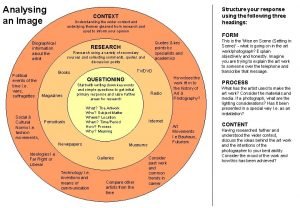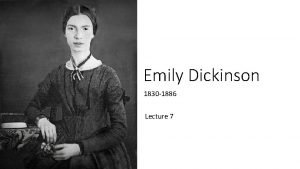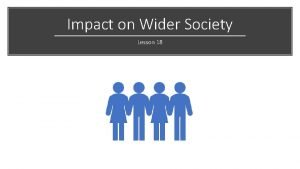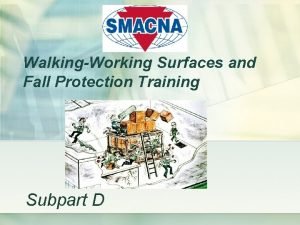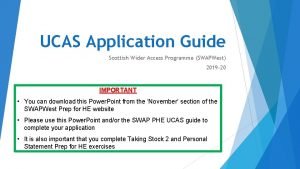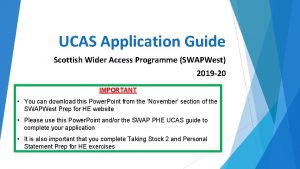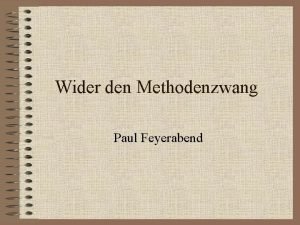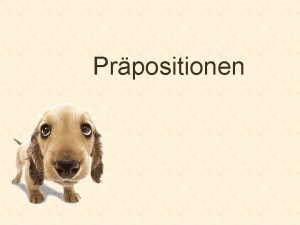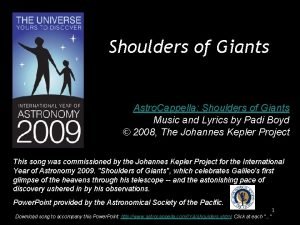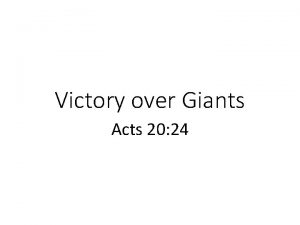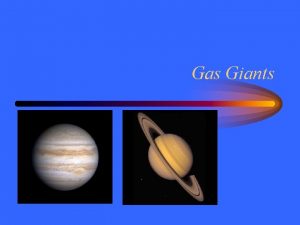Wider curriculum Do giants live in Northampton Awesome









- Slides: 9

Wider curriculum Do giants live in Northampton? Awesome Acorns Sarah Appleyard, Sian Lambert, Chloe Saunders and Jack Dyson

Why we want to take the children to Abington Park… We would like to take the children to Abington park as we believe it would enhance the children’s learning further than it would in the classroom. Beames and Higgins (2012) state that classrooms are limited in their capacity to foster real world interactions with people and places. Having considered this, taking the children to explore the outdoors means they can create ideas they would not have been able to within the classroom. Eg, using the trees for props. The National Curriculum (2014) states that it is important to have exciting activities that inspire curiosity. Having the outdoors around the children will allow them to experiment with lots of different ideas. It is important for the children to be creative, explore and record their experiences which they will do during the visit and afterwards in school.

What we decided… We decided to base our question on whether giants live in Northampton. With this open ended question children can take ownership of their learning and have active input in the way that their topic develops. They can look at the history of Northampton to look at the landscape in the past and now. This will allow them to see how it has changed and what has stayed the same. With our topic being based around this question, it would allow us to take the children on a trip to Abington Park, where we would be able to provide lessons with a focus on geography, PE and art.

What we plan to do… Before taking the children to Abington Park, there will have to be some teaching and learning taken place within the classroom so that the children have some ideas already of what they have do at Abington park. The teaching beforehand will allow the children to have an idea of what they think a giant is and what it looks like. We will explore the possibilities of it being a person or a creature. Afterwards, that is for the children to decide. We will introduce two books to the class; Giant by Juliet and Charles Snape and David and Goliath from the Bible. Both of these books introduce giants to the children and perceive giants in a different way. This will allow the children to create their own ideas of what they think a giant is and what it looks like. Giant by Juliet and Charles Snape links with what we will be doing in Abington Park and will give the children ideas of how they could create a giant.

Lesson 1 at Abington Park Art – Building the giant Within Abington Park there are lots of trees, grass, plants, people, wildlife and so on. This is a perfect place for the children to use their surroundings to build a giant (by using items from the environment as tools). The children will have an idea of what they think a giant looks like at this point as they will have been working on their own interpretation of what giant looks like, and will be able to use ideas from the giant book by Juliet and Charles Snape. This lesson is an important end to the art topic for the term as it will allow children to consolidate their learning and create their own piece of art. The children will work in groups of 10 to create their giant sculpture and it will to up to them what they use to create it. This activity will allow the children to work on their team work skills and creativity as well as being able to negotiate. This activity allows the children to work in mixed ability groups. This is important because it will allow the higher ability children to support the lower ability children and work together to solve problems. (Bremner, 2008).

Lesson 2 at Abington Park Geography – Litter Survey For geography, the children will use the book ‘Giant’ again as a stimulus. In the book, one of the reasons the giant leaves the village because of the local villagers have thrown rubbish all over the ground (on top of the giant). This will be our stimulus for the children when we go to the park an talk about the litter that has been left around near the café. The children will be imagining that the whole of Abington Park is the ‘giant’ and that people are throwing rubbish on the giant. The main activity for the litter that has been left on the group will be a survey. The children could also look to see how many bins there are in the park and whether this is enough for the amount of visitors that come to the park (which we look at before our visit). This activity will allow the children to improve their data collection skills, using tally charts. The will then be able to look at their data when they get back to school and look at different ways to present their data (National Curriculum, 2013). The children will work in pairs for this activity and will be given a different part of the park to focus on. When they get back to school they will then bring all of the data together as a class.

Lesson 3 at Abington Park PE – Orienteering For PE the children will be working in groups of four to complete an orienteering activity. The children will have pictures of locations around the park and they will have to find them to go onto the next one. This will allow the children to access the whole park and explore what the giant (Abington Park) looks like as a whole. The children will have i. Pads for access a map of the park to help them to find their way around the park. The National Curriculum (2013) states that children should take part in outdoor adventurous activities, as well as this, the activity will allow them to improve their team work skills, direction skills and geography skills.

The overview Location: Abington Park Date: 08/07/14 Price: £ 4 per child Amount of chd: 30 Amount of staff: 4 Risk assessment: Low/Medium Activities: Art – Building a giant Geography – Litter survey PE – Orienteering

Beames, S, Higgins, P (2012) Learning outside the classroom: Theory and Guidance for practice. Oxon: Routledge. Bremner, S (2008) Some thoughts on teaching a mixed ability class. Scottish Languages Review, 18, 1 -10. National Curriculum (2013) Geography Programmes of study: key stages 1 and 2 [online] Last accessed 23 rd May 2014 at: http: //www. rgs. org/NR/rdonlyres/5 A 01 BFEA-9103 -4 E 76 -8 FE 96 CB 27 CFD 5524/0/PRIMARY_national_curriculum__Geography 2013. pdf National Curriculum (2013) Physical Education Programmes of study: key stages 1 and 2 [online] Last accessed 23 rd May 2014 at: https: //www. gov. uk/government/uploads/system/uploads/attachment_dat a/file/239040/PRIMARY_national_curriculum_-_Physical_education. pdf
